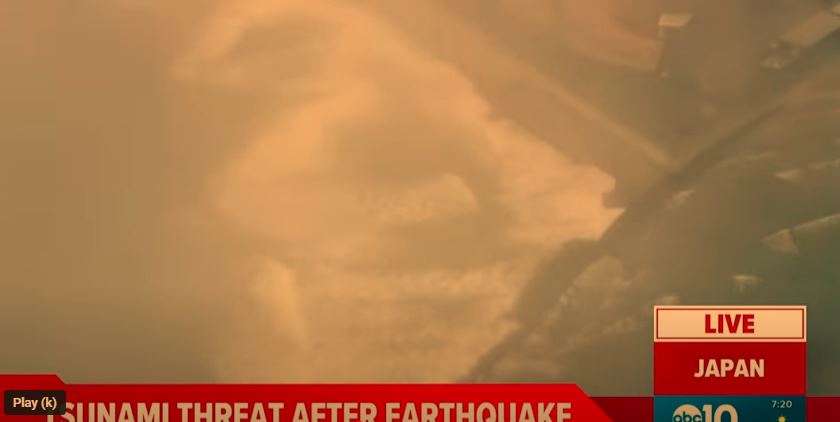On July 29, 2025, the National Tsunami Warning Center issued an advisory for California’s coastal regions after a massive 8.7-magnitude earthquake hit off the coast of Russia’s Kamchatka Peninsula. The tremors sent waves across the Pacific, prompting alerts for areas spanning from Mendocino to Monterey counties. While the alert wasn’t a full-fledged tsunami warning, it reminded Californians of the ever-present risks posed by natural disasters.
The advisory’s tone wasn’t as severe as a full tsunami warning, but the message was clear: the coast is at risk. And as the first waves from the quake roll in, experts urge residents to stay alert. Tsunamis can be unpredictable, and though the first wave may not be the largest, its potential to cause harm should never be underestimated.
What is a Tsunami Advisory, and What Does it Mean?
A Tsunami Advisory indicates that a tsunami capable of producing dangerous waves is expected or already occurring. For Californians, this advisory was a warning to be prepared for strong currents and potential flooding, especially in harbors and near the coastline. But the message from experts was clear: widespread flooding wasn’t anticipated.
Experts from the National Weather Service cautioned that tsunamis come in waves. The first one isn’t always the most destructive. This unpredictable nature is what makes preparedness so crucial.
Bio Data on Dr. Lucy Jones, Tsunami Expert and Advocate
| Personal Information | |
|---|---|
| Name | Dr. Lucy Jones |
| Profession | Seismologist and Expert on Natural Disasters |
| Career Highlights | Seismologist at Caltech; Founder of the Dr. Lucy Jones Center for Science and Society |
| Publications | Authored numerous books and scientific papers on seismic hazards |
| Notable Contributions | Led community preparedness campaigns; Known for tsunami risk education efforts |
| Expert Advice | Advocates for integrating technology to better predict seismic events and mitigate risks |
| Website | Dr. Lucy Jones Center |
Why Preparedness is Key
While the tsunami threat may have been low this time, it’s not always the case. In California, a state prone to earthquakes, readiness is critical. Experts, like Dr. Lucy Jones, have long stressed the importance of educating the public on how to respond. The advisory serves as a reminder that tsunamis are not one-time events but a series of waves that may hit hours apart.
Technological advancements have improved tsunami forecasting, but these events are still unpredictable. It’s the unknown factor that makes preparation so vital. With the right information, Californians can be ready when the next alert comes.
Technology: A Lifeline in Tsunami Preparedness
In today’s world, technology plays a huge role in keeping communities safe. From real-time tsunami alerts on smartphones to deep-ocean sensors, California’s tsunami warning systems are more advanced than ever. These innovations allow scientists to predict tsunamis with remarkable accuracy and give coastal communities the time they need to act.

In Mendocino County, local authorities hold regular drills that help residents familiarize themselves with evacuation routes. These exercises have proven to be incredibly effective, ensuring that when disaster strikes, people know exactly what to do.
Additional Details
- What is the current tsunami warning in California?
Tsunami warnings and advisories are regularly updated through official channels such as the National Weather Service and the Pacific Tsunami Warning Center. It’s important to stay informed via local news sources. - What areas in California are at risk of a tsunami?
Coastal areas, particularly those near fault lines like San Francisco, Monterey, and Mendocino, are at risk. Communities along the coast should always be prepared for the possibility of a tsunami. - How can I prepare for a tsunami in California?
Preparation includes knowing evacuation routes, having an emergency kit, and staying informed during a tsunami watch or advisory. Local governments often provide guidelines and safety tips for residents. - How are tsunami warnings issued in California?
Tsunami warnings are issued based on seismic activity, with information gathered from ocean sensors and seismic monitors. Alerts are sent out through government systems and can be followed on local news or official websites.
The Future: Building Resilience Against Tsunami Threats
While the current tsunami advisory may not have resulted in widespread damage, it emphasizes California’s vulnerability to natural disasters. Experts like Dr. Lucy Jones advocate for continuous innovation in both technology and public education. The more prepared communities are, the better they can handle these unpredictable events.
Looking forward, California is building a future where technology, community preparedness, and smart infrastructure work together to mitigate the risks of tsunamis. The journey to resilience isn’t easy, but with each step forward, California becomes better equipped to face whatever the future holds.
